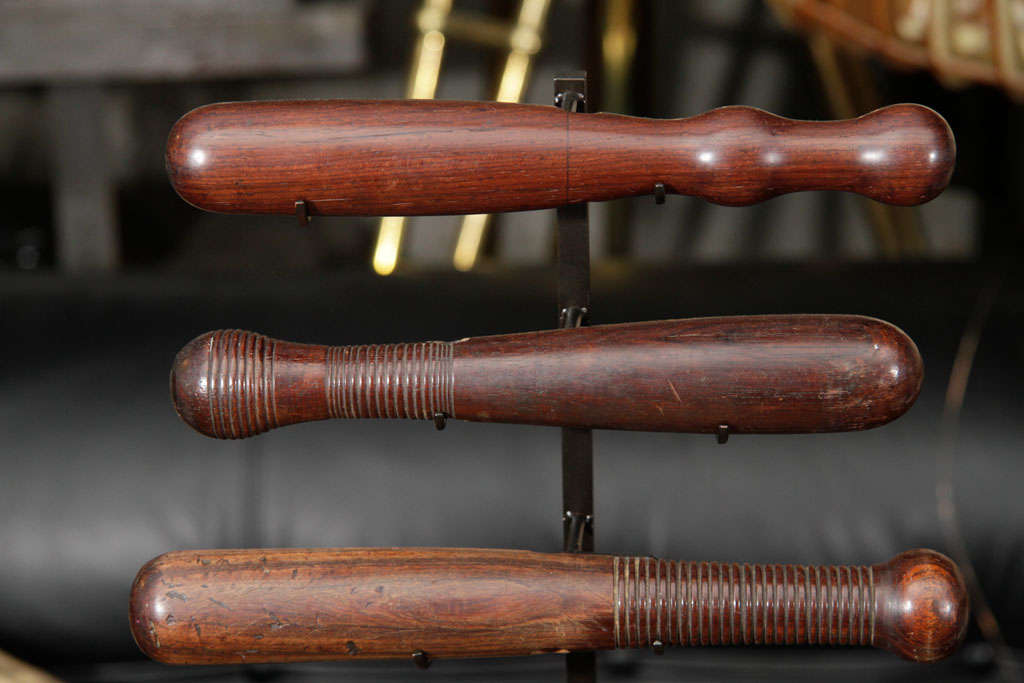A Timeless Symbol Of Authority And Protection

The term "billy club" evokes images of law enforcement and the protection of society, but its history and significance run much deeper than that. Originally crafted as a tool for self-defense and order maintenance, the billy club has evolved into a multifaceted symbol of authority that transcends its physical form. From its humble beginnings in the hands of street watchmen to its contemporary use by police officers, the billy club represents a complex relationship between power, protection, and public perception. As we explore the nuances of the billy club, we will delve into its history, purpose, and the ongoing debates surrounding its use in modern law enforcement. The billy club is not merely a weapon; it is a cultural artifact that reflects the changing dynamics of authority and societal values over time.
In the age of rapid technological advancement and evolving societal norms, the billy club has sparked discussions about safety, police reform, and community relations. This article aims to shed light on the various dimensions of the billy club, examining its historical context, present-day implications, and the ongoing conversations surrounding its role in law enforcement. Join us as we navigate the fascinating world of the billy club, a seemingly simple object that embodies a complex interplay of history, culture, and authority.
The billy club is not just an object; it is a narrative woven into the fabric of society. Understanding its origins and transformations can provide valuable insights into how authority has been exercised and perceived throughout history. As we unpack the story of the billy club, we will address key questions surrounding its significance and impact, allowing us to appreciate the broader implications of this iconic symbol.
What is the History of the Billy Club?
The billy club has a rich and varied history that dates back to the early 19th century. Originally, the billy club was a simple, blunt instrument used primarily by watchmen and law enforcement officers for self-defense and crowd control. Its design and usage have evolved significantly over the years, reflecting the changing needs of society and law enforcement.
Who First Used the Billy Club?
While the exact origin of the billy club is difficult to pinpoint, it is believed to have been first used by early law enforcement officials in the United States. The term "billy" is thought to derive from the name of a popular police chief in New York City in the 19th century, who was known for using this type of club. Over time, the billy club became a standard tool for police officers, symbolizing authority and order.
How Has the Design of the Billy Club Changed Over Time?
Initially, billy clubs were made from wood and were often straight or slightly curved. However, as law enforcement practices evolved, so did the design of the billy club. Modern versions are often made from materials such as rubber or plastic, featuring ergonomic designs and sometimes even incorporating technology like flashlights or grips for enhanced functionality.
What Role Does the Billy Club Play in Modern Law Enforcement?
In contemporary law enforcement, the billy club remains a tool for officers, often used in situations where de-escalation is necessary. However, its use has sparked significant debate among community leaders, activists, and police departments. Critics argue that the billy club can be a symbol of excessive force, while supporters maintain that it is an essential tool for maintaining order and safety.
What Are the Arguments For and Against the Use of the Billy Club?
- Arguments For:
- Effective tool for self-defense and protection
- Helps police officers maintain control in volatile situations
- Can prevent the escalation of violence
- Arguments Against:
- Potential for abuse and excessive force
- Can contribute to negative perceptions of law enforcement
- Calls for police reform and alternative methods of conflict resolution
What Alternatives Are Available to the Billy Club?
As discussions surrounding police reform continue, many law enforcement agencies are exploring alternatives to the billy club. Options such as verbal de-escalation techniques, non-lethal weapons like tasers, and comprehensive training programs aimed at improving community relations are being considered. These alternatives seek to address concerns about excessive force while still equipping officers with the tools they need to ensure public safety.
What is the Cultural Significance of the Billy Club?
The billy club has transcended its practical usage to become a cultural symbol representing authority, order, and, at times, oppression. Its portrayal in media, literature, and art often reflects societal attitudes toward law enforcement, power dynamics, and justice. Understanding this cultural significance can provide valuable insights into how the public perceives law enforcement and the broader implications of authority in society.
How Has the Billy Club Been Portrayed in Media and Literature?
In films, books, and television shows, the billy club is frequently depicted as a tool of law enforcement, often symbolizing the power dynamics at play between the police and the community. These portrayals can influence public perceptions of law enforcement and shape societal attitudes toward authority. Some narratives highlight the billy club as a necessary tool for maintaining order, while others critique its use as a representation of state violence.
What Lessons Can We Learn from the Billy Club's Evolution?
The evolution of the billy club offers valuable lessons about power, authority, and societal values. As we reflect on its history and contemporary implications, we can better understand the ongoing conversations surrounding law enforcement practices and community relations. The story of the billy club serves as a reminder that symbols of authority must evolve in tandem with societal expectations and values.
In conclusion, the billy club is more than just a tool for law enforcement; it is a cultural artifact that embodies the complexities of authority and societal dynamics. By examining its history, usage, and cultural significance, we can foster a deeper understanding of the ongoing conversations surrounding police practices and the quest for a more equitable society.
ncG1vNJzZmirn521b6%2FOpmasp5idu6bD0qCcq7FoZK%2BquMuyZJykpZd7qcDMpQ%3D%3D